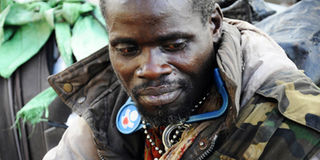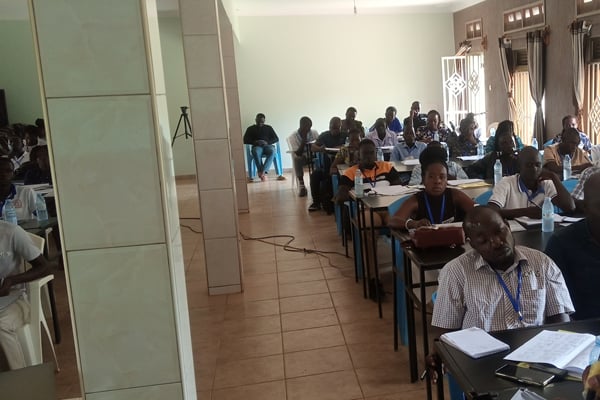Report finds fewer poor Ugandans

A homeless man at Owino Market. A new report has revealed that the number of chronically poor Ugandans has dropped by a half. Pohto By Rebecca Vassie
What you need to know:
According to the Uganda Chronic Poverty report, while Uganda has made significant efforts in reducing the proportion of citizens living below the absolute poverty line, nearly 10 per cent of the households continue to live in chronic poverty.
KAMPALA
The number of Ugandans who are chronically poor and live below the absolute poverty line has dropped by half from a high of seven million in 2005, a new report shows. But variations in population growth and widening income inequality over the years, experts say, present a far grimmer picture than what this marked decline may want to suggest.
According to the second Uganda Chronic Poverty report, whose findings were released in Kampala yesterday, while Uganda has made significant efforts in reducing the proportion of citizens and households living below the absolute poverty line, “nearly 10 per cent of the households continue to live in persistent or chronic poverty.”
That places the number of citizens in chronic poverty at 3.4 million given estimates of Uganda’s population at 34 million citizens. It is a significant drop from earlier findings in 2005, which placed the number of citizens in chronic poverty at seven million from a population of 26 million citizens.
Chronic poverty is characterised by persistent lack of basic life necessities like food, clean water, shelter, beddings, clothes, healthcare and education. Despite the decline, the report expressed deep reservations about the government’s current poverty eradication strategies and urged a complete turnaround.
“Otherwise, Uganda’s achievement of the first millennium development goal of halving extreme income poverty earlier than 2015 might not be sustainable,” said the report, the result of a three year research by Chronic Poverty Research Centre, a global network whose work in Uganda is coordinated by Development Research and Training.
Researchers faulted government for treating poverty eradication as “homogenous” and rolling out “blanket” programmes despite evidence showing that poverty varies across the country.
The researchers also picked issue with the design and implementation of several poverty eradication programmes, noting that citizens in chronic poverty were deliberately being kept out of.
“Access to public extension programmes such as the National Agricultural Advisory Services, which are intended to enhance agricultural production and productivity is skewed to well-to-do households and not evenly distributed across region,” said the report. “Similar observations are noted in access to community infrastructure. There is therefore need to ensure that the benefit of economic growth reach the poorest in a way that expands their opportunities.”
A senior technical officer at the Ministry of Finance, Mr Fred Mugisha, whose daily brief involves quantitative policy analysis and poverty monitoring, admitted that the government’s policy flows are “a matter of design and implementation.” “The government interventions are usually mass interventions,” he said. “But now for the first time we have been able to know the exact number of chronically poor people so now we can begin to re-engineer our programmes.”




